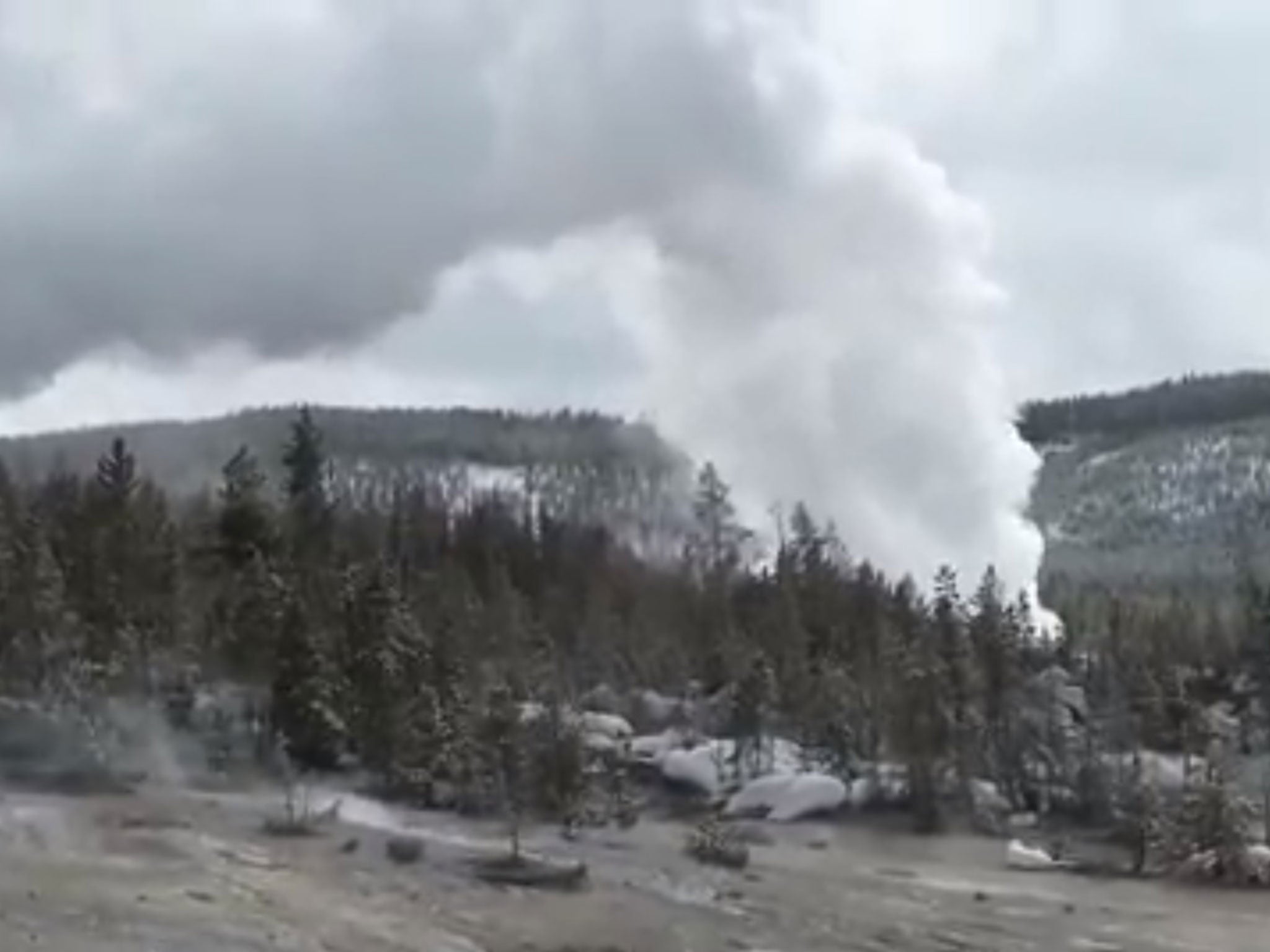World’s biggest active geyser erupts at Yellowstone National Park for fifth time this year
'There is nothing to indicate that any sort of volcanic eruption is imminent'

The world’s largest active geyser has erupted for a fifth time this year, prompting geologists to quell fears that a supervolcano is set to explode.
The cause of the Steamboat Geyser's sudden restiveness remains unknown.
But the US Geological Survey have dismissed concerns that it could mean a giant underground store of magma – enough to cover half the US in lava – is about to blow from Yellowstone National Park.
It said Steamboat “also had frequent eruptions in the 1960s and early 1980s in a series of tweets.
“No implications for volcanic activity, but good implications for viewing some spectacular geysering this summer," it added.
Michael Poland, head of volcano observatory, said: “There is nothing to indicate that any sort of volcanic eruption is imminent.”
Steamboat’s increased activity, he said, simply “reflected the randomness of geysers,”

At its most powerful the geyser has been known to shoot water 115 metres into the air. That’s three times taller than it’s more famous and more frequent Yellowstone neighbour, Old Faithful, which blasts off every hour or so.
The extensive geothermal activity at the park – which is spread across Wyoming, Montana and Idaho – is caused by a magma chamber more than 50 miles long and 12 miles wide beneath the earth’s surface.
If that ever explodes, it is estimated it would not only cover half the US in lava but also disrupt weather patterns across the planet.
Earlier this month scientists deployed 28 seismographs to the area to gather data during its current period of activity.
Join our commenting forum
Join thought-provoking conversations, follow other Independent readers and see their replies
Comments